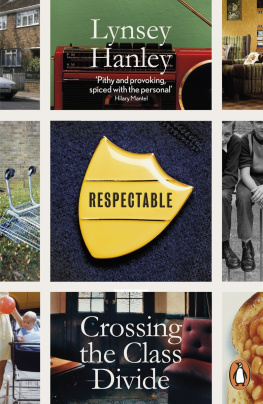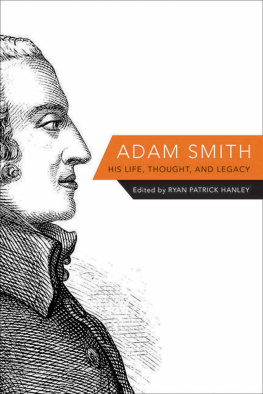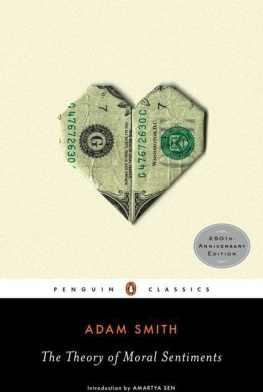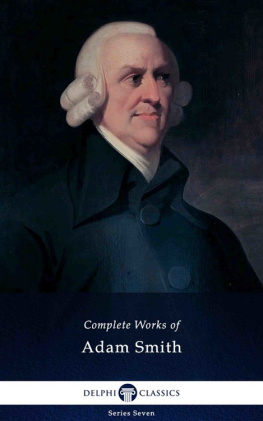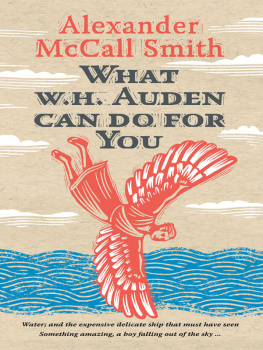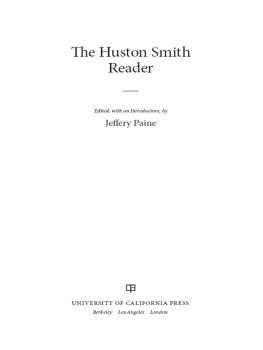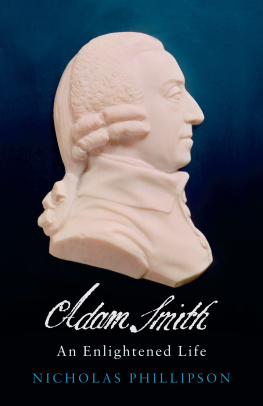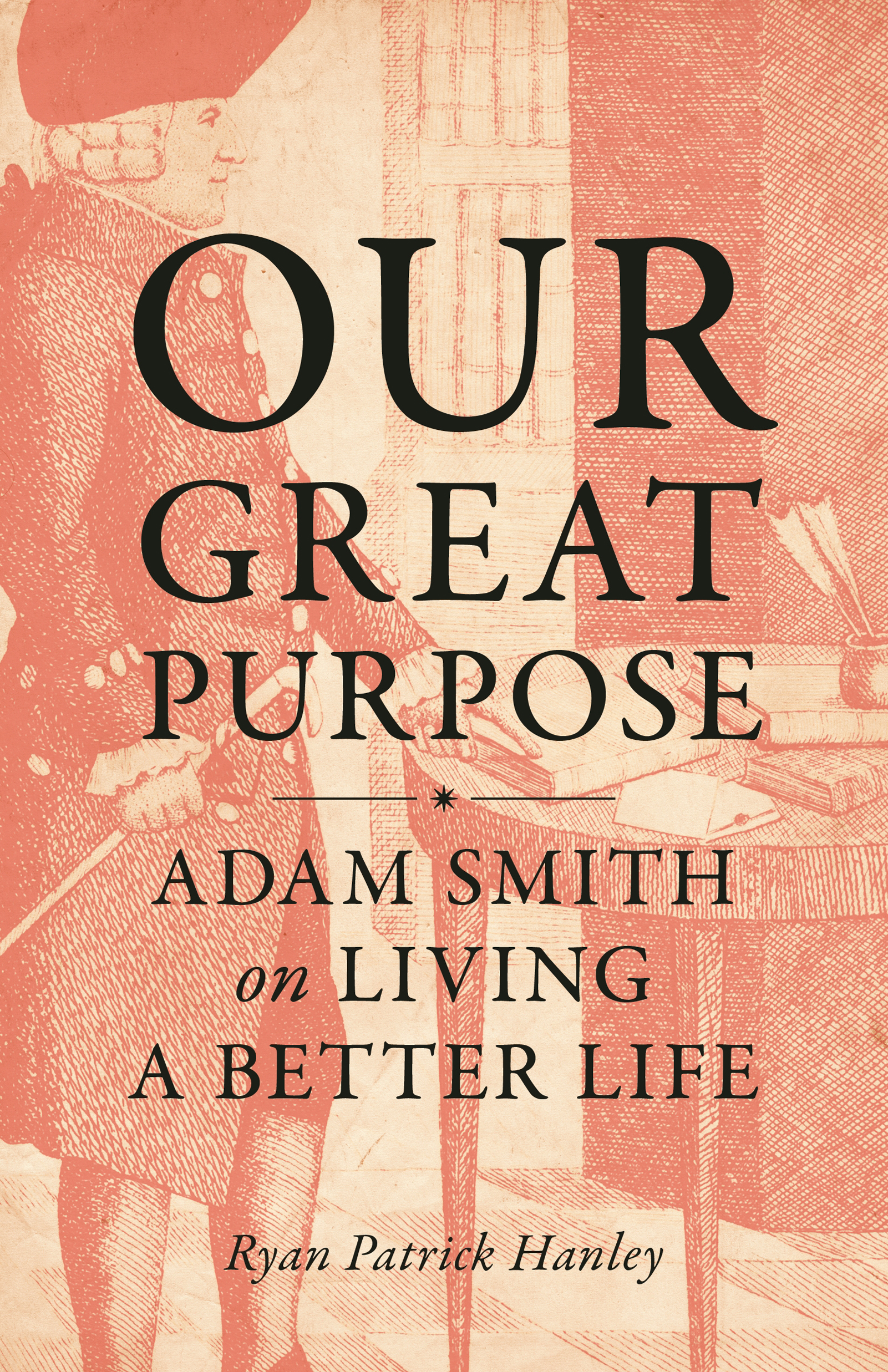OUR GREAT PURPOSE
Copyright 2019. Princeton University Press. All rights reserved. May not be reproduced in any form without permission from the publisher, except fair uses permitted under U.S. or applicable copyright law.
EBSCO Publishing : eBook Collection (EBSCOhost) - printed on 12/30/2019 8:23 AM via FLORIDA STATE UNIV-MAIN
AN: 2043378 ; Hanley, Ryan Patrick.; Our Great Purpose : Adam Smith on Living a Better Life
Account: s5308004
OUR GREAT PURPOSE

ADAM SMITH on LIVING A BETTER LIFE
Ryan Patrick Hanley
PRINCETON UNIVERSITY PRESS
PRINCETON AND OXFORD
EBSCOhost - printed on 12/30/2019 8:23 AM via FLORIDA STATE UNIV-MAIN. All use subject to https://www.ebsco.com/terms-of-use
Copyright 2019 by Princeton University Press
Published by Princeton University Press
41 William Street, Princeton, New Jersey 08540
6 Oxford Street, Woodstock, Oxfordshire OX20 1TR
press.princeton.edu
All Rights Reserved
Library of Congress Cataloging-in-Publication Data
Names: Hanley, Ryan Patrick, 1974 author.
Title: Our great purpose : Adam Smith on living a better life / Ryan Patrick Hanley.
Description: Princeton : Princeton University Press, [2019] | Includes bibliographical references and index.
Subjects: LCSH: Smith, Adam, 17231790. | Conduct of life. | Life.
Classification: LCC B1545.Z7 H365 2019 | DDC 170/.44dc23
LC record available at https://lccn.loc.gov/2019018023
Identifiers: LCCN 2019018023 | ISBN 9780691179445 (hardcover : acid-free paper)
ISBN (e-book) 978-0-691-19775-3
Version 1.0
British Library Cataloging-in-Publication Data is available
Jacket Image: Adam Smith, engraving, 1970. Courtesy of the Library of Congress
EBSCOhost - printed on 12/30/2019 8:23 AM via FLORIDA STATE UNIV-MAIN. All use subject to https://www.ebsco.com/terms-of-use
For my daughter
EBSCOhost - printed on 12/30/2019 8:23 AM via FLORIDA STATE UNIV-MAIN. All use subject to https://www.ebsco.com/terms-of-use
Contents
- 1
- 11
- 15
- 19
- 23
- 28
- 32
- 36
- 40
- 44
- 49
- 52
- 56
- 60
- 64
- 69
- 74
- 78
- 83
- 88
- 92
- 96
- 101
- 105
- 109
- 113
- 116
- 121
- 125
- 130
- 133
- 139
- 141
- 149
- 157
EBSCOhost - printed on 12/30/2019 8:23 AM via FLORIDA STATE UNIV-MAIN. All use subject to https://www.ebsco.com/terms-of-use
OUR GREAT PURPOSE
EBSCOhost - printed on 12/30/2019 8:23 AM via FLORIDA STATE UNIV-MAIN. All use subject to https://www.ebsco.com/terms-of-use
Introduction
What does it mean to live a better life? And for that matter, what exactly does it mean to live a life in the first place? These are hardly easy questions to answer. And they certainly arent easy things to do. But at the very least, it seems to me, living a life requires that we be actively engaged in pursuing a trajectory that we can recognize as a lifethat is, a trajectory that not only has a beginning and middle and end, but also has a unity to it that enables us to see all its different parts as fitting together in a meaningful way.
Some people are better at this than others. But a lot hangs on whether we can do it well. Each of us, after all, has been given only one life to live. So as we each live this single life that is ours, we have to make all sorts of choices about what paths to follow and not follow. But what makes one path better than another? What standard should we use to judge what choices to make? And where should we turn for guidance on all of this?
This book suggests we can find an excellent guide to these questions in Adam Smith. This is likely to strike many people as surprising. Adam Smith of course is famous today as a founding father of capitalism, not for his ideas on how to live a life. But as I show below, Smith in fact has much to offer us on this front. In particular, Smiths philosophy of living (and I do think were right to speak of his thought in this way) is founded on a synthesis of action and reflectionor, to use Smiths own words, a synthesis of wisdom and virtue.
Smiths belief that living a good life requires bringing together action and reflection not only is central to his philosophy of living, but also distinguishes his project from other sorts of efforts in this vein. Modern readers, when they hear talk of living good lives, may expect a self-help book, the sort of thing that outlines (in the words of one recently popular exemplar) a set of rules for life. But for all this we do Smith an injustice if we reduce his concerns with the philosophy of living to practical maxims of the sort one finds in the work of Smiths friend Benjamin Franklin or in todays self-help books. Smith, to put it bluntly, knew that there is all the difference in the world between learning how to get ahead in life and learning how to live life well.
Smiths books then have something to offer to the busy and upwardly mobile. But they have more to offer, I think, to a different sort of reader, after something different than easy advice, quick fixes, and lists of rules. This book presents Smiths wisdom on this front to the sort of readers who will welcome not only an opportunity to see Smith in a new way, but also an opportunity to see how seeing Smith in this new way might lead them to see themselves and their own lives in a new way.
And that we will be seeing Smith in a new way is clear. Smiths philosophy of living has not been a prominent element of the voluminous scholarship on his thought. Some of the very best scholars of his thought in fact have argued that Smith thinks the aim of moral philosophy is merely to provide an account of the origin and function of our moral concepts, and as a result, if we want guidance on how to live the good life, we should look elsewhere. In presenting Smith as a wise guide to living a life, I cast some light on some sides of his thought that have received relatively less attention, and I hope this may be of interest to specialists. But more importantly, I hope that by presenting Smith in this way, readers of this book will have an opportunity to spend some time withindeed live witha thinker who has a great deal to show us about our own lives and what we do well to think about if we hope to live them as well as we can. I first encountered Adam Smith a quarter century ago, and I know my own life is better for the years Ive lived with him. I hope this might in time prove true for you as well.
This book is of course about Smiths thoughts on living a life. As such, it does not aspire to provide a full treatment of Smiths own life or his thought. But insofar as the story of his life and the broader themes of his thought are not irrelevant to our focus, a very brief introduction to his life and his ideas may be useful.
Smith was born in 1723 in the coastal town of Kirkcaldy, just north of Edinburgh. His father died before he was born, leaving him to be raised by his devoted and loving mother. After receiving an excellent early education at his local parish school, he was sent to study at the University of Glasgow. Here he completed his undergraduate studies, in part under the tutelage of his beloved teacher Francis Hutcheson, widely regarded today as the father of what has come to be known as the Scottish Enlightenment. After finishing at Glasgow in 1740, Smith received a scholarship to Oxford to continue his studies in preparation for a career as a minister. But Oxford disappointed him, and he returned to Scotland in 1746.


